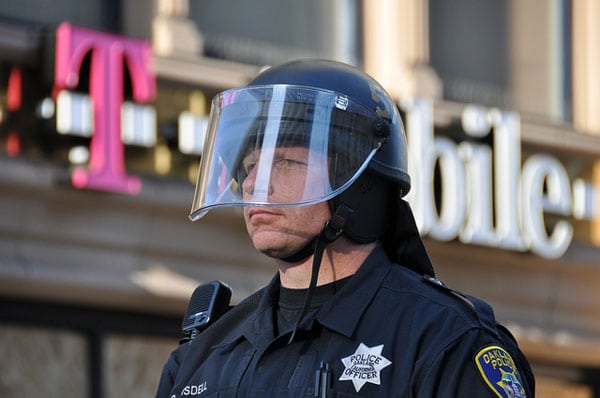
August 3, 2018; The Conversation
Authors of a study recently published in the American Journal of Public Health argue that police homicide presents such a high risk that it should be considered a public health issue. Through the use of a dataset made public by the nonprofit Fatal Encounters, run by journalist D. Brian Burghart, the authors find:
Police in the US kill on average more than 1,000 men per year, or about three men per day. According to our estimates, police are responsible for about eight percent of all adult male homicide deaths in the US each year.
This staggering total far exceeds previous estimates using official government records in the Bureau of Justice Statistics and National Vital Statistics System. By the authors’ count, the Fatal Encounters database finds more than twice as many deaths each year than the official records would indicate, although the rates in which Blacks and Latinxs are killed relative to whites remains consistent with previous studies.
These data diverge because local law enforcement agencies are not required to report officer-involved killings to the federal government. As a result, these numbers are underreported, and while certainly not always due to nefarious motives, one can see that there is clearly a conflict of interest here. It does not reflect kindly upon a police department to have an officer-involved killing, let alone multiple killings.
To make up for this oversight, media sources like The Guardian, the Washington Post, and organizations like Fatal Encounters scour the far reaches of the internet to find news reports of officer-involved deaths, making up for those that are left out of the official record for one reason or another. Their work makes it possible for academics and policymakers to better understand the problem at hand. Left to the official count, society might underestimate the prevalence of this problem, and write it off as a relatively minor issue. To wit:
Sign up for our free newsletters
Subscribe to NPQ's newsletters to have our top stories delivered directly to your inbox.
By signing up, you agree to our privacy policy and terms of use, and to receive messages from NPQ and our partners.
Conversations about the incredibly high homicide rate in the US must acknowledge that police are responsible for about one in 12 of those deaths. Reducing overall homicide risk, particularly among men of color, appears to require reform that explicitly targets interactions between police and civilians.
Taking the above into account, it is important to note that the authors study the rates of police-involved killings, the underreporting of those killings, and the inequalities across races. They are not able to shed light on why these disparities exist, and without the why, a sound policy solution will remain a tenuous proposition. The solution for an overtly racist or violent police officer would presumable differ drastically than one for a poorly trained officer. However, some real gains can be made by reducing the moral hazard of “shoot first” policing and increasing officer accountability.
An important part of this study’s findings is that the racial disparities are similar to those found in other data sources. That lends some credibility to the data itself. The authors also do a great job of cleaning the data to make sure that it does not “over count” the instances of policing killings. Still, twice the reported total officer killers is an incredibly large jump. It should be noted, though, that one study with an incredibly granular dataset—one that is ideal for these sorts of studies—finds that while excessive force is more likely to be used against Blacks and Latinxs, fatal shootings do not differ across racial lines.
All of this leads to the heart of the problem when it comes to studying police interaction with civilians: the data available are not all that reliable. When reported by police departments, there is an incentive to downplay or misrepresent facts. Nonprofits like Fatal Encounters provide a healthy third-party look at the data and, hopefully, paint a better picture of the world as it is. Until reporting requirements change, this is our best bet. Given their reliance on news reporting for sources, this is yet another illustration of the importance of an independent media and how it is the ally of all citizens.
In the meantime, policymakers and advocates should look at studies like this as an upper bound of the number of officer-involved killings. There is certainly a strong case to be made for this to be a health issue. These instances breed distrust in communities that can have long-lasting and devastating effects on the interactions between civilians and police. A better understanding of what is happening will help that.—Sean Watterson













